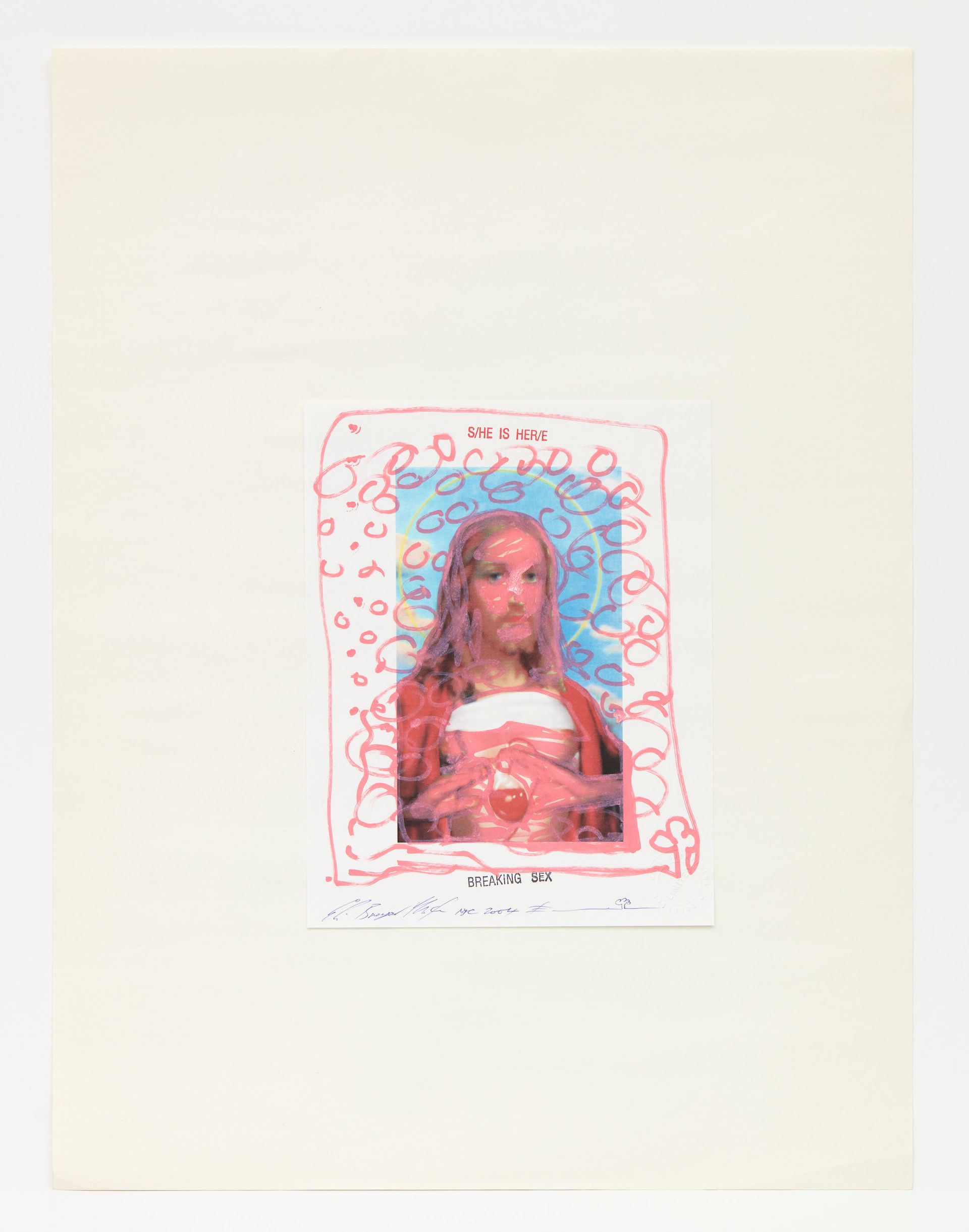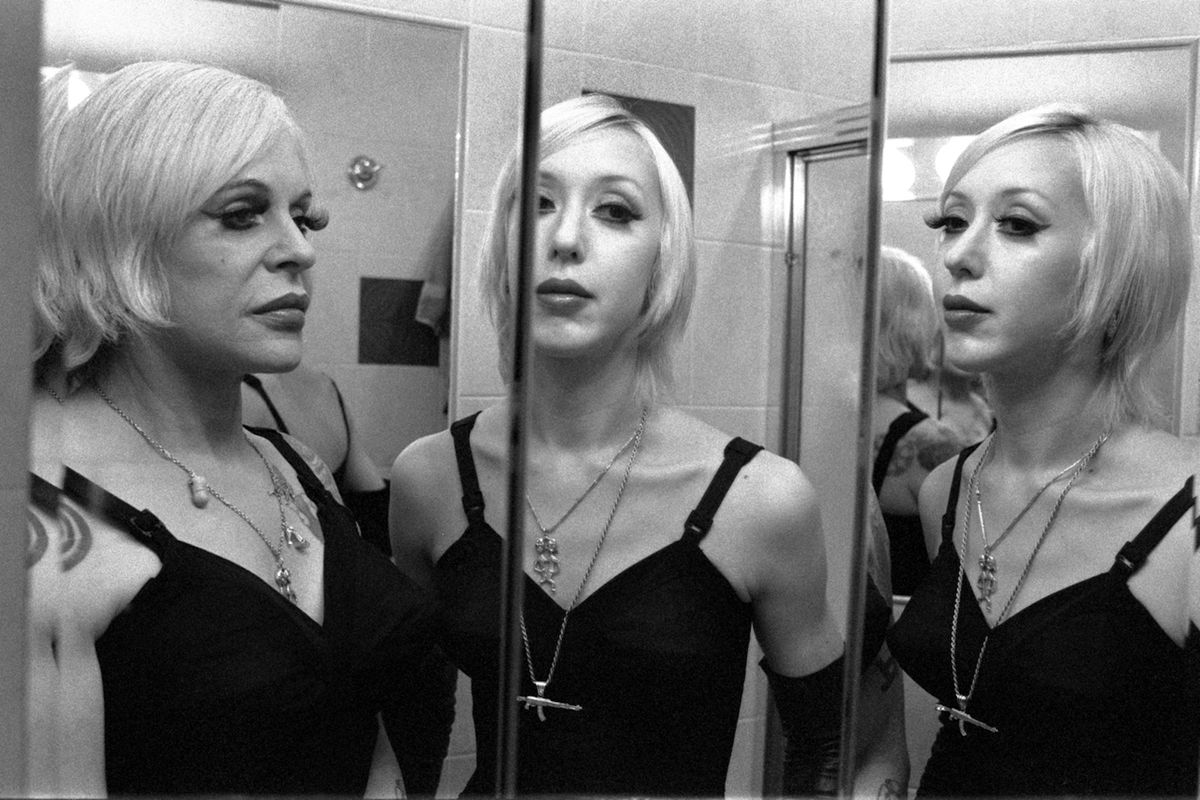BREYER P-ORRIDGE: We Are But One, which will open on 15 April at Pioneer Works at Red Hook Labs in Brooklyn, will be the first institutional show of works by Genesis P-Orridge (who often used the pronouns “s/he + h/er”) since the artist dropped her body—as she would have put it—on 14 March 2020, a few years after her terminal leukemia diagnosis. It will also be the first institutional show to focus on what might be P-Orridge’s magnum opus: the Pandrogyne project, in which she and her romantic and artistic partner Jacqueline Mary Breyer, better known as Lady Jaye, embarked together on a series of cosmetic surgeries in an effort to look more and more like one another, attempting to knock at the door of merging into a singular being that defied categorisation. The project officially began on Valentine’s Day 1993, and continued until 2003.
“I knew Genesis for 20 years, and even in that period of time she changed constantly,” says Benjamin Tischer, the show’s curator and co-founder of the since-shuttered gallery Invisible Exports, which represented P-Orridge for over a decade. “It’s been so interesting since she passed away because I’ve met all these people that knew her at different times. She would constantly reconceive who she was and change. That was one of her things, that you should always be testing and changing whatever your concepts are.”
And there is no doubt that Genesis lived by this maxim. Born Neil Andrew Megson in 1950, Genesis did live any number of lives: these included fronting the pivotal bands Throbbing Gristle and Psychic TV, which coined the term “industrial music” and created a genre that would open the door for generations of musicians; running a soup kitchen in Kathmandu; dedicating herself to art, mysticism and a general dismantling of all barriers—gender, of course, among them. She was a living embodiment of non-dual thinking, firmly dedicated to dismantling egoistic notions of the self in all their myriad forms, and a tour-de-force of liberation from social norms whose logic often crumble given the slightest nod of inquiry.

Untitled drawing by Genesis P-Orridge Courtesy of New Discretions. Photo by Max C. Lee.
“Gen saw pandrogyny and trans culture in general as a huge evolutionary step towards being better humans,” Tischer says. “She would constantly talk about how the end goal is to be better humans, away from the basenesss of the animal world and towards something that is more of our own creation.”
We Are But One will host photographs that document Genesis and Lady Jaye’s physical transformations, images in which appendages from the two bodies meld into a singularity, as well as sculptures, drawings, video and collage. Collage was a central element to the Pandrogyne project, inspired by the “cut-up” technique championed by William S. Burroughs and Brion Gysin—friends and mentors to Genesis—the collage medium became an easy metaphor for how to live in the organic, all-encompassing way that the Pandrogyne project embodies. Also on view will be a shrine-like structure built for the exhibition by Genesis’s daughter, Genesse, who now manages the P-Orridge estate.
The shrine will house totems from P-Orridge’s life—”things like my dad’s hair, and the snakeskin from the 11ft boa that we had when I was growing up,” says Genesse. In its center will be Blood Bunny (1997-2007), a wooden sculpture that contains the blood of both Genesis and Lady Jaye, as well as a lock of Lady Jaye’s hair. “Blood Bunny is a really special work that my dad would never sell,” Genesse says. “People would always offer, but my dad would say that every offer wasn’t enough, and it became a fixture of my dad’s home.”

Lady Jaye and Genesis P-Orridge Photo by Laure Leber
“My dad was very big into the importance of constantly evolving and changing and growing and becoming better, as well as the importance of eradicating the idea of self and other,” Genesse says. “My dad was always rebelling against the either/or construct—’you’re this’ or ‘you’re that’, or ‘you can’t be this and that’—my dad was always pushing against that in all different ways and modalities, and I think that’s a really important piece of the legacy.”
Tischer adds, “Even if the easy boil-down of the Pandrogyne project is the gesture against limitations and DNA, and the idea that we can all change ourselves any way we want or a gesture towards celebrating true love and loving someone so much you want to be them, I think there’s a larger implication as well, in which it’s about becoming a better being. There’s an aspiration towards the betterment of humanity as a whole.”
He continues, “I really do think Genesis changed culture so much. She always ran 20 years ahead of the rest of us, so we’ve still got some time to catch up.”
- Breyer P-Orridge: We Art But One, 15 April-10 July, Pioneer Works at Red Hook Labs, Red Hook, Brooklyn.


